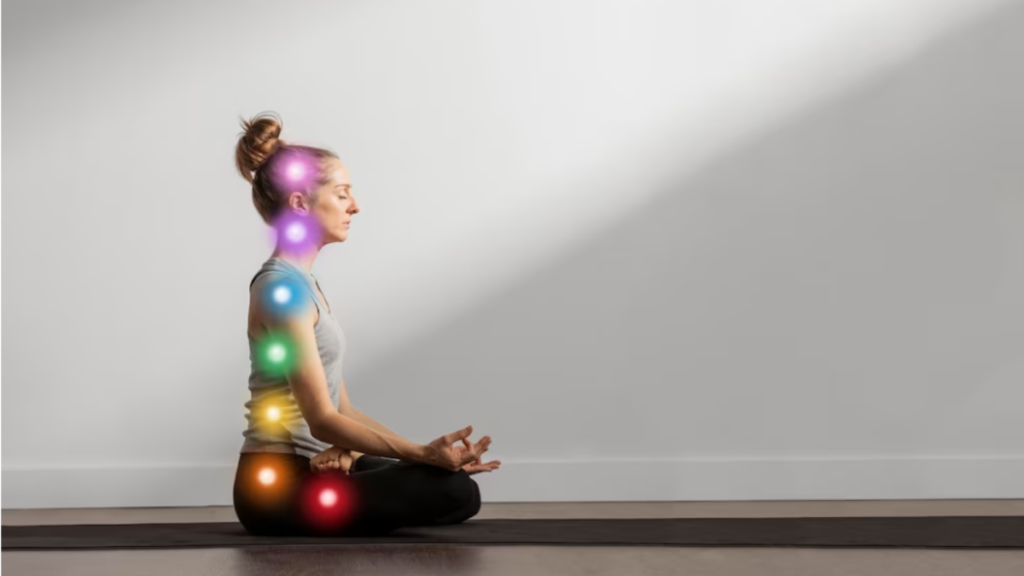
Every year on June 21 st , the world celebrates international yoga day. Pranayama is a part of the ancient yogic tradition and can be called as Yogic Breathing Techniques (YBT). Pranayama in the Sanatana dharma (Hinduism) texts, authored by Sage Patanjali in his work ’The Yoga
Sutras of Patanjali’ is a deep breathing and rhythmic breathing techniques. In Sanskrit, prana (life energy) means vital life force and ayama means to gain control.
Many of us have been practicing yoga, emphasizing on pranayama either daily or weekly few times a day. The yoga practitioners or the yoga teachers do know the benefits of pranayama at large, however, many of them do not know the mechanism, like what happens neurobiologically in the brain that elicits the larger benefits to the body, mind and soul.
This blog will try to unravel looking deep into scientific literature on the neuroscience of pranayama. The neuroscience of pranayama, a yogic practice involving many breathing techniques focuses on holistic living and is an area of growing interest for researchers. There is
very little literature on neuroscience of pranayama and it’s impact on focus or concentration. However, there are some theories and literature on potential neurological mechanisms involved. The techniques of the pranayama with deliberate inhaling and exhaling techniques with slow deep fast or rhythmic breathing call by various names like Bastrika, Anulom-vilom, Kapala bhati (one nostril breathing ) and Brahmri. These practices can influence the autonomic nervous system specifically the balance between the sympathetic nervous system and parasympathetic nervous system. Techniques like one nostril breathing have been associated with increased parasympathetic activity which promotes relaxation and focus.
Studies have also shown that there is a significant correlation between the breathing techniques or pranayama on the brain activity. fMRI studies have shown that deep breathing exercises can activate the prefrontal cortex, a region involved in attention, concentration and working memory. Respiratory sinus arrhythmia (RSA), is a natural variation that happens in the heart during breathing, with heart rate increasing during inhalation and decreasing during exhalation. Pranayama techniques can enhance this RSA by increasing the attentional focus and emotional regulation of the subject. The combination of focused breathing, mental concentration, and mind-body awareness in pranayama practices may synergistically enhance attentional control and concentration. The neuroscience of pranayama and focus is still an emerging field, some of the preliminary findings suggest that Pranayama practices may modulate the autonomic nervous system, activate brain regions involved in attention and promote relaxation, potentially enhancing focus and cognitive performance. Further, specific literature on the neuroscience of pranayama and focus is limited. However, there are some studies and resources that explore the effects of pranayama practices on the brain and attention. Research is needed to better understand the underlying neurobiological mechanisms and the specific effects of different pranayama techniques on focus or concentration.
A study by Ananya Mandal et al, 2013, ‘Effects of slow breathing exercise on autonomic function, baroreflex sensitivity and cerebral hemodynamics’ found that slow breathing can influence heart rate variability, blood pressure and set up parallel blood flow potentially
impacting attention and cognitive processes. Sushil chaudhary et al, 2016, ‘Effects of yogic pranayama and meditation on coordination
between eye brain respiration and heart rate variability’, this research examined the effects of pranayama and meditation on the coordination between eye-brain respiration and heart rate variability. The study found that pranayama practices improved the synchronization between
eye movement and respiration, suggesting potential benefits for attention and focus. Varun Mittal, 2022, in their study, ‘Immediate neurological and autonomic changes during kapalbhati pranayama in yoga practitioners’ found that, during and after kapalabhati there
are changes observed in the brain waves as compared with reference point values. Further, it is found that during pranayama there was parasympathetic withdrawal and sympathetic activation. There is an increase in gamma wave activation after the pranayama
Maheshkumar Kuppusamy et al, 2018, Effects of Bhramari Pranayama on health – A systematic review, have found strong amplitude of gamma waves after 30 days of Bhramari practice with two sessions of practice per day for 30 days; the waves stayed for several minutes even after practice is completed.
These above references provide some insights into the effects of pranayama and related practices on the brain, autonomic function and attention. However, it’s important to note that the literature on the specific neuroscience of pranayama and focus is still to be explored. Further, research is needed to explore the neural mechanisms underlying these practices and their impact on attention and cognitive processes.
References & further readings:
#Anasuya, Boligarla, Deepak Kishore Kumar, Jaryal Ashok Kumar, Narang Rajiv, ‘Effect of slow breathing on autonomic tone & baroreflex sensitivity in yoga practitioners’, Indian Journal of Medical Research 152(6):p 638-647, December 2020
#Maheshkumar Kuppusamy a Dilara Kamaldeen, Ravishankar Pitani, Julius Amaldas, Poonguzhali S hanmugam, ‘Effects of Bhramari Pranayama on health – A systematic review’, Journal of Traditional and Complementary Medicine, Volume 8, Issue 1, January 2018, Pages 11-16
# Varun Malhotra, Danish Javed, Santosh Wakode, Rajay Bharshankar , Neha Soni, and Patrick K. Porter, ‘Study of immediate neurological and autonomic changes during kapalbhati pranayama in yoga practitioners’, Journal of Family Medicine and Primary Care 11(2):p 720-727, February 2022.
# Stephany Campanelli, Adriano Bretanha Lopes Tort, and Bruno Lobão-Soares, Pranayamas and Their Neurophysiological Effects, International Journal of Yoga, 2020 Sep-Dec;13(3):183-192
# https://doi.org/10.1016/j.jtcme.2017.02.003
